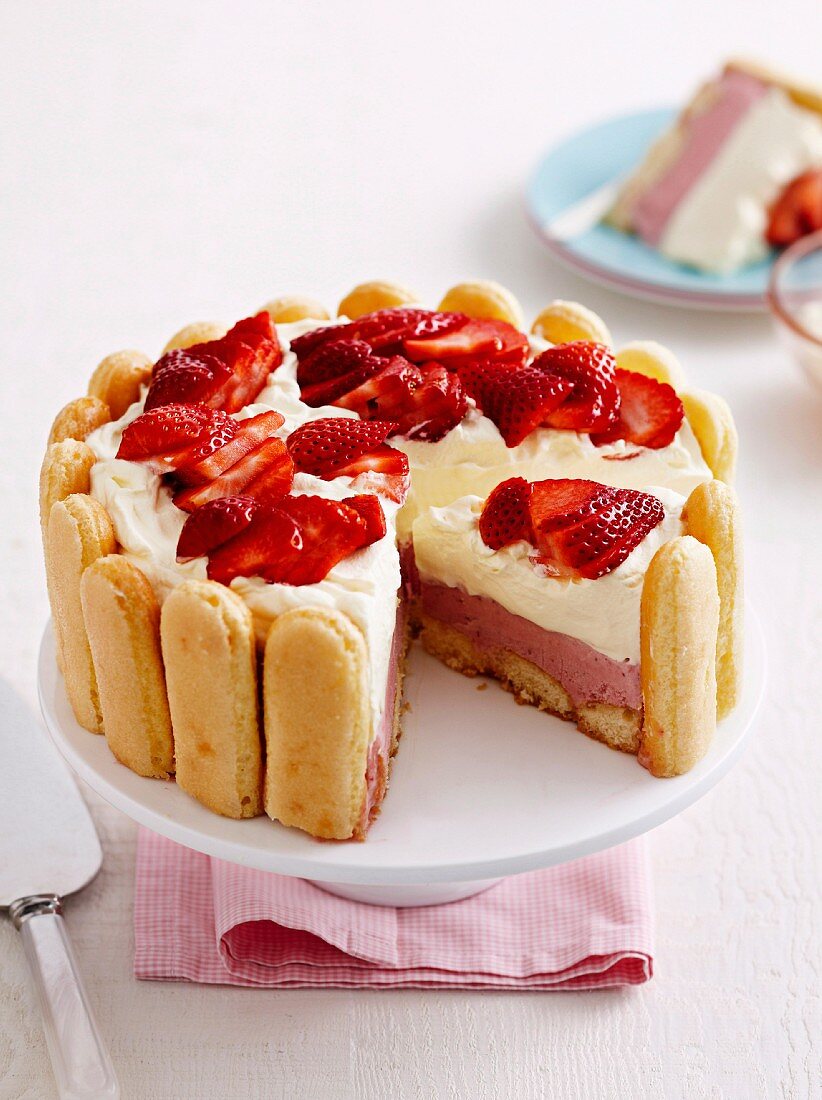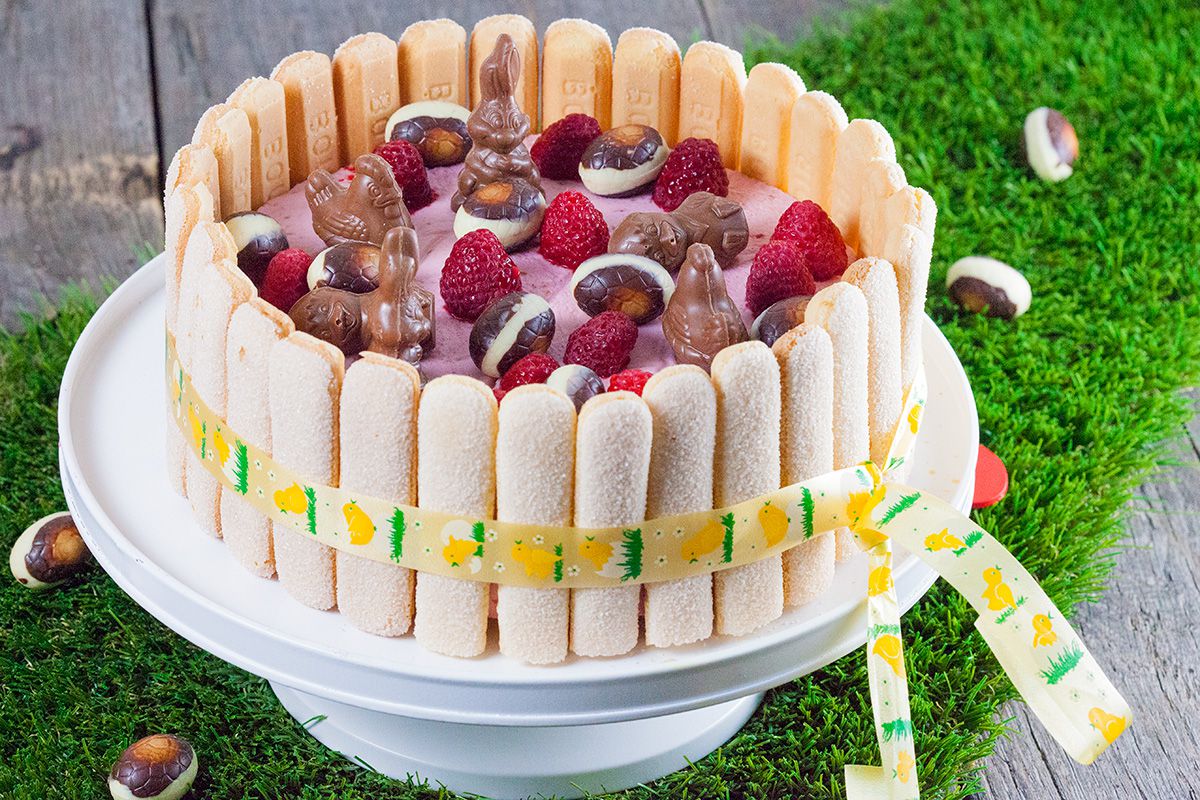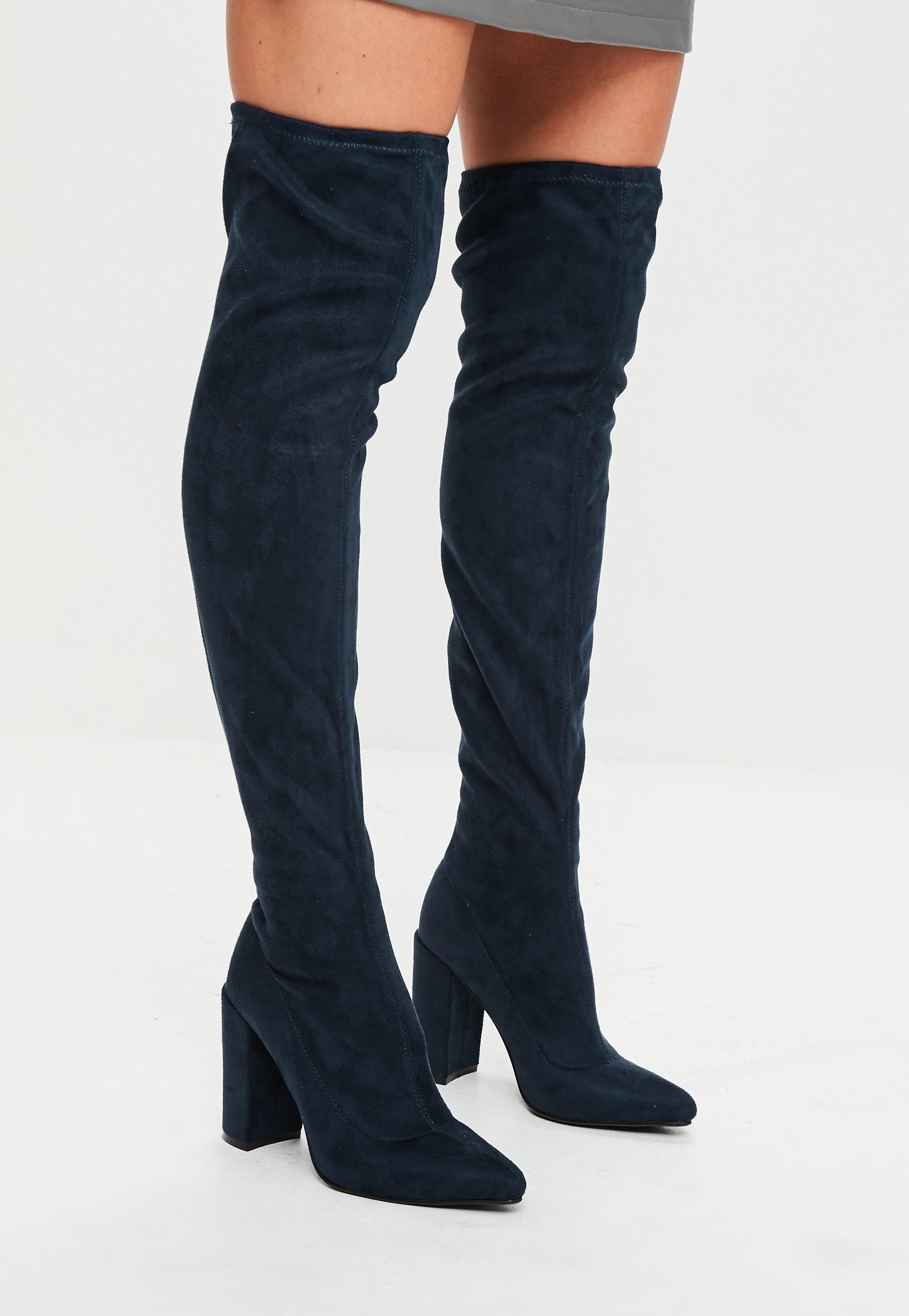

Just prior to serving, garnish as desired – with strawberries or other fruit, more whipped cream, and/or powdered or colored sugar. Place in the freezer for an hour and then take out and carefully unmold onto a plate.ġ0. Fold remaining whipped cream into custard mixture and then pour over ladyfingers.ĩ. Grease a spring form pan (or spray with cooking spray) and then line bottom and sides with ladyfingers, using whipped cream to “glue” them together to form a solid bottom.Ĩ. Place cream, powered sugar and vanilla in bowl and whip using an electric mixer on medium speed for about 7-8 min. Remove chilled bowl and whisk from freezer. While still warm, pour in the gelatin and let cool for 20 minutes.Ħ. Remove milk from heat, and gradually add to the egg mixture, stirring constantly with a whisk.

Cook milk in a large, heavy saucepan over medium-high heat to 180° or until tiny bubbles form around edge (do not boil). Combine eggs, sugar, and salt in a large bowl stir well with a whisk.Ĥ. Let stand for 1 minute, then add 1/2 cup boiling water, stirring constantly until granules are completely dissolved.ģ. In a mixing bowl, sprinkle 2 packets unflavored gelatin over 1/2 cup cold water. Place a metal mixing bowl and whisk(s) from an electric mixer in the freezer.Ģ.

(Prior to this, gelatin was created via a lengthy process that involved making a thick, gelatinous stock from animal products rich in natural gelatin such as veal knuckle, calves feet, bacon hock and rind, poultry bones, and fish trimmings.) The charlotte russe recipe from Anna Maxwell’s journal embraced this new culinary innovation, calling for boxed gelatin:

Victorian Americans were undoubtedly taking advantage of the newfangled powdered, unflavored gelatin that became available in the 1880s and is now recognizable as packets of Knox® Unflavoured Gelatine, sold in a little orange box. Variations of the popular dessert quickly emerged, including making the pudding as individual servings, and adding gelatin or isinglass (gelatin made from the swimming bladder of certain fish) to help “set” the pudding, and make it easier to turn out in one piece, which was a common American adaptation. Carême originally called the dish charlotte à la parisienne, but it is believed he changed it to charlotte russe in honor of Russian Tsar Alexander I. A luscious chilled dessert of vanilla Bavarian cream set in a mold lined with ladyfingers, it was created by French chef Carême at the beginning of the nineteenth century. The name charlotte is thought to be in honor of Queen Charlotte, the wife of George III of England. The most famous baked version is an apple charlotte, which incorporates buttered bread, stewed apples and a breadcrumb topping. “Charlotte” desserts originated in England at the end of the eighteenth century and are essentially puddings poured into a mold that has been lined with bread or sponge fingers. Dishes named for people were either a favorite of that famous person or created in their honor, as is the case with charlotte russe, which was technically named after two people. Naming a dish after a geographical location lent a mysterious element to a meal, summoning up images of distant horizons and alluring travel possibilities. In the Victorian era it was especially fashionable to name foods after famous people and places.


 0 kommentar(er)
0 kommentar(er)
